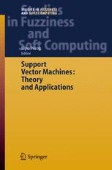Search
Search Results
-
Measuring User Satisfaction in Web Searching
Search engines are among the most popular as well as useful services on the web. But the problem we face is due to the large number of search engines...
-
A Fuzzy Method for Learning Simple Boolean Formulas from Examples
We discuss a method for inferring Boolean functions from examples. The method is inherently fuzzy in two respects: i) we work with a pair of formulas...
-
1 Introduction
The problem of position control of robot manipulators was addressed in the 1970’s to develop control schemes capable of controlling a manipulator’s...
-
Kernel Discriminant Learning with Application to Face Recognition
When applied to high-dimensional pattern classification tasks such as face recognition, traditional kernel discriminant analysis methods often suffer...
-
Multiple Model Estimation for Nonlinear Classification
This chapter describes a new method for nonlinear classification using a collection of several simple (linear) classifiers. The approach is based on...
-
Active Support Vector Learning with Statistical Queries
The article describes an active learning strategy to solve the large quadratic programming (QP) problem of support vector machine (SVM) design in...
-
Pareto Optimal Coordination on Roadmaps
Given a collection of robots sharing a common environment, assume that each possesses an individual roadmap for its C-space and a cost function for...
-
Coordinating Multiple Droplets in Planar Array Digital Microfluidics System
This paper presents an approach to coordinate the motions of droplets in digital microfluidic systems used for biochemical analysis. A digital...
-
Semi-Differential Invariants for Recognition of Albebraic Curves
This paper studies the recognition of low-degree polynomial curves based on minimal tactile data. Differential and semi-differential invariants have...
-
Computing Deform Closure Grasps
In prior work, we extended the well-known form closure grasp framework for rigid parts to a class of deformable parts, modeled as frictionless...
-
Intelligent Neurofuzzy Control of a Robotic Gripper
One of the major challenges of robotics is the gras** and manipulating of objects in an unstructured environment, in particular where the physical...
-
Sequential Pattern Mining*
Sequential pattern discovery has emerged as an important research topic in knowledge discovery and data mining with broad applications. Previous...
-
Uncertain Knowledge Association Through Information Gain
The problem of entity association is at the core of information mining techniques. In this work we propose an approach that links the similarity of...
-
Soft Computing Paradigms for Web Access Pattern Analysis
Web servers play a crucial role to convey knowledge and information to the end users. With the popularity of the WWW, discovering the hidden...
-
Ontology-based Fuzzy Decision Agent and Its Application to Meeting Scheduling Support System
A Fuzzy Decision Agent (FDA) based on personal ontology for Meeting Scheduling Support System (MSSS) is proposed in this chapter. In this system,...
-
D-GridMST: Clustering Large Distributed Spatial Databases
In this paper, we will propose a novel distributable clustering algorithm, called Distributed-GridMST (D–GridMST for short), which deals with large...
-
Data Mining of Missing Persons Data
This paper presents the results of analysis to evaluate the effectiveness of data mining techniques to predict the outcome for missing persons cases....
-
Current Status of Computerized Decision Support Systems in Mammography
Breast cancer is one of the most devastating and deadly diseases for women today. Despite advances in cancer treatment, early mammographic detection...
-
6 Beamforming Combined with Multi-channel Acoustic Echo Cancellation
For audio signal acquisition, beamforming microphone arrays can be efficiently used for enhancing a desired signal while suppressing...
-
4 Optimum Beamforming for Wideband Non-stationary Signals
Array processing techniques strive for extraction of maximum information from a propagating wave field using groups of sensors, which are located at...
